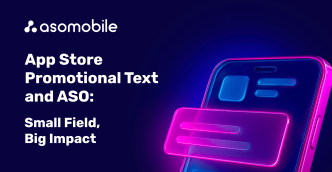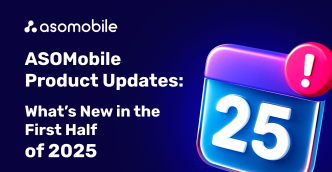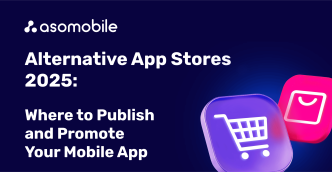Shopping App Category 2024: Analysis and Forecast
Today, we’ll discuss the shopping app category and the key trends shaping the future of e-commerce. Before diving into the specifics of online shopping, let’s review some overarching statistics to assess the current market landscape.
E-commerce soared to new heights during the COVID-19 pandemic, establishing itself as one of the fastest-growing sectors. According to Statista, the U.S. market grew by an impressive 46% in 2020. While such explosive growth is behind us, experts predict a steady upward trajectory. The numbers are striking: in 2023 alone, retail sales through shopping apps in the U.S. reached a staggering $491 billion. By 2027, this figure will almost double, reaching $856 billion.
The Market Share of Shopping Apps
Mobile devices have played a critical role in this growth, solidifying their dominance. Statista reports that in 2023, purchases made via mobile devices accounted for $1.7 trillion—more than half of all online sales. Smartphones have become the undisputed leaders in driving traffic and processing orders. The statistics speak volumes: 80% of website visits and 66% of all orders are completed via mobile phones and apps.
Here’s an interesting fact: users spend approximately 10 minutes per session in shopping apps. While 10 minutes might seem short, the figures are astonishing when multiplied by the vast number of users. Out of nearly 8 billion people worldwide, 2.6 billion—or roughly a quarter of the global population—use shopping apps to make at least one purchase per year.
As of late 2024, the mobile app market continues to amaze with its scale: the App Store hosts nearly 6 million apps, while Google Play boasts over 14 million. This expanding mobile ecosystem offers users increasing convenience for quick and seamless shopping.
Shopping apps rank seventh in downloads among all categories in the App Store, underscoring their popularity.
Although their revenue isn’t as staggering as overall retail sales, shopping apps still show steady growth. On iOS, the category generates an average of $2 million per month as of November 2024, ranking 35th in revenue among all categories and 8th in downloads. There are 11,678 apps in this category.
Surprisingly, Android outpaces Apple in mobile shopping revenue, with an average of $3.9 million per month, ranking 19th by revenue. However, in terms of installs, Android lags slightly, ranking 15th. The platform offers a broader variety of options, hosting 18,012 shopping apps.
These figures indicate that shopping apps still have tremendous growth potential. Now is the perfect time to explore the trends within this category and understand where the market is heading.
Trends in the Shopping App Category in 2024
Dependency on Global Economic Trends
Consumer purchasing power fluctuates with the global economy but never disappears entirely. In 2024, users face a backdrop of worldwide instability and economic challenges, but key calendar events and seasonal promotions remain critical. Beyond traditional celebrations like Christmas, New Year’s, Thanksgiving, and Halloween, seasonal events (e.g., Back to School, Black Friday, Cyber Monday) are pivotal for shopping apps.
For instance, during Black Friday 2023 in North America, sales through shopping apps increased by 11%. Seasonal events are akin to an oil field for shopping apps—providing opportunities to capitalize on heightened user activity.
Additionally, modern technologies have significantly enhanced the user experience. Integrating AI and AR into shopping apps transforms online shopping into a seamless and engaging process. For example:
- Amazon offers personalized recommendations powered by AI and fast delivery options.
- Shein and AliExpress attract users with loyalty programs.
- Zalando and ASOS utilize AR to provide virtual try-on experiences.
ASO Strategies for Shopping Apps
Economic Impact on ASO
Regardless of economic crises, people continue to shop. However, the depth of a crisis often correlates with consumer spending behavior. In 2024, consumers are increasingly mindful of what, where, and how they purchase. Today’s customers demand more than just quality—they expect value for their money.
Conversion Rates and User Behavior
Benchmark data from early November 2024 reveals promising conversion rates:
- Google Play: Page View to Install (53.87%)
- App Store:
- Impression to Page Views (2.76%)
- Page Views to Units (79.08%)
- Impression to Units (2.18%)
Shopping apps on Google Play lag behind iOS in engagement and conversion rates. This suggests a stronger user trust in Apple’s ecosystem and brand credibility.
Branding as a Key ASO Strategy
Data shows that users prefer familiar apps with recognizable names and icons. Therefore, a strong brand identity is essential for any successful ASO strategy in this category.
Textual ASO for Shopping Apps
Users often install apps they are already familiar with. Therefore, it’s best to communicate with customers using simple, concise, and clear messages, avoiding overly complex wording in titles and icons. A smart approach is to combine the brand name with relevant keywords.
For example, in the Top 10 free iOS apps in the Shopping category in the U.S. market, the first seven positions are occupied by apps that follow the formula brand + keyword (e.g., "shop" or "shopping" with variations like "online"). This effective combination allows apps to rank in search results for specific brand searches (targeting loyal users) and generic keyword queries (targeting undecided users). Positions 8 and 10 follow the same formula but with niche-specific keywords like Makeup, tailored to their market segment.
In the Grossing (revenue-generating) category, the top two spots are held by apps using this branding strategy, combining the brand name with shopping-related keywords: OfferUp - Buy Sell Letgo and CARFAX - Shop New & Used.
A similar trend is observed on Google Play. The top four positions are also occupied by apps that follow the brand name + keyword formula. In the Grossing category, the leaders are Amazon Shopping and OfferUp - Buy Sell Letgo, showcasing the effectiveness of this approach for revenue-generating apps.
Visual ASO Optimization
Icons
Icons are a key element of visual ASO. Most shopping apps use branded icons that stand out and reinforce brand identity. Two approaches dominate:
- Text-based icons: Incorporating the brand name directly into the icon.
- Logo-based icons: Using a recognizable logo.
The color palette is highly varied, with no specific trends dominating—icons tend to be bright and eye-catching, designed to prompt immediate action. Contrasting and vibrant colors draw attention, but there’s an important consideration: avoid black icons for Android apps due to the widespread use of dark mode on Android devices.
In contrast, black-and-white icons are not only suitable but highly recommended for iOS apps. The classic black color emphasizes Apple’s minimalistic and timeless design aesthetic. This monochrome style is especially popular among shopping apps from well-known sports brands, reinforcing their brand identity effectively.
Screenshots
Screenshots should highlight discounts, seasonal promotions, or unique features like virtual try-ons. High-quality product images optimize the user experience, ensuring convenience and driving repeat usage.
Videos
Video content is often less effective for shopping apps. Instead, focus on showcasing promotions and products through screenshots.
Key Takeaways
By 2027, Statista projects revenue in the shopping app category will reach $856 billion, with 66% of all orders placed via mobile devices. Despite ongoing global instability, shopping apps rank seventh in downloads on the App Store as of November 2024.
To succeed, prioritize:
- Brand recognition in ASO strategies.
- Textual and visual optimization with a focus on simplicity and quality.
- Leveraging seasonal events for growth.
 Українська
Українська  Русский
Русский  Español
Español 






